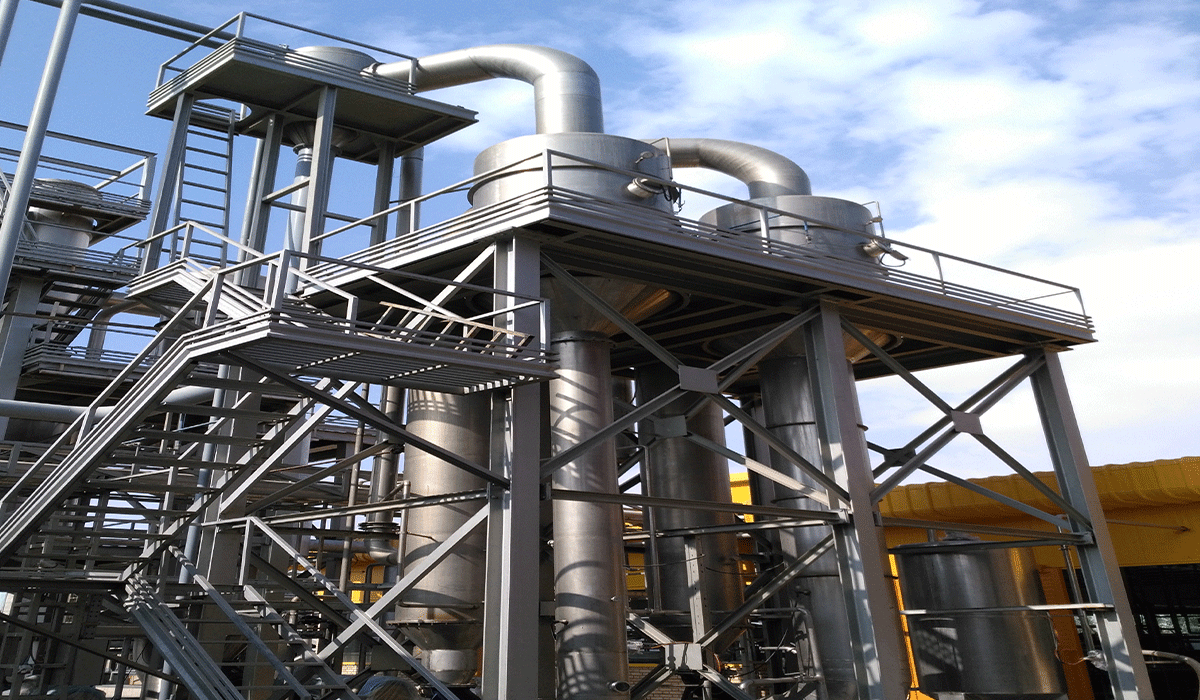What is Tomato Paste aseptic packaging?
Aseptic packaging is a process during which microorganisms are prevented from entering a

The aseptic packaging process is optimal for making sterile and sustainable canning in the food industry. Tomato paste is one of the most essential products packaged with the aseptic method. Unlike disinfection or sterilization within the container, in aseptic, the product and package are sterilized independently by optimal processes in which microbial inactivation (enzyme brie) and degradation of the degrading factor are carried out simultaneously. Aseptic packaging is the process of filling commercial sterilized products in pre-sterilized containers. Containers are sterilized using one of four techniques: heat, mechanical, irradiant, or chemical.










Aseptic storage tank is an all-automatic device to buffer liquid foods such as milk, yogurt, rice pudding, sauces, and tomato paste. This device ensures the health of safe food and is used as an independent unit or as part of an integrated production and packaging line of tomato paste. Aseptic tanks are designed and manufactured in different types for products with various viscosity and volume. This system is used in aseptic filler machines after evaporation and before the final sterilization of tomato paste to increase production sequence, reduce crop loss, and improve efficiency.
Aseptic storage tanks are made using stainless steel and are usually mounted vertically and cylindrically, with plate bottoms or tapered shapes, equipped with cooling jackets. These tanks are created and checked to ensure their performance at predetermined pressure and under a vacuum. If the product is to be disassembled, the tanks may also be equipped with a stirrer installed at the bottom.
Before production starts, aseptic tanks are sterilized with steam and then cooled by circulating water in the cooling jacket. At this stage, sterile air enters the tank, which prevents the vacuum from forming and keeps the tank under pressure. During production, sterile air fills the area above the product surface of the tank. The tanks have a valve cluster module and a control panel that guides product flow, cleaning fluids, sterile air, and steam. During production, a vapor barrier protects from pollution.
Advantages of Aseptic Storage Tanks:
Filling and sterilizing a food product is a feature of aseptic storage tanks. Tanks also offer:

An aseptic sterilization system has the ability to sterilize liquid, beverage, and canned products such as tomato paste. The system can sterilize both packaging and product separately in several different ways. Aseptic sterilization, compared to another model sterilizer, has the following characteristics:
2. The system is fully automatic and can automatically control the sterilization of the lobe and material.

The aseptic filling machine is specifically designed to fill large volumes of aseptic bags, with the features of covering small floor space, high stability, and easy operation. Aseptic filler is widely used in liquid aseptic packaging, such as fruit juice, pulp, and jam. At room temperature, the product can be stored for more than one year, saving the cost and the risk of cold storage transportation. The aseptic filling machine can be directly connected to a sterilizing device, and UHT sterile products can be filled directly into an aseptic bag. An aseptic bag is a laminated aluminum plastic bag that can effectively separate sunlight and oxygen, maximizing the product quality.
The bag-in-box aseptic filling machine (BIB) is designed to fill aseptic bags prepared from craters with sterile liquids such as natural fruit juice, concentrate, vegetable juice, fruit syrup, fruit jam, magma drink, dairy, and pharmaceutical products.
Aseptic filler receives a drum or bucket through roller conveyors. Containers can be drums in one line, drums in one pallet (4 drums), and buckets. The operator puts the bag in the container, and the drum and the kit are automatically shipped to the filling piston. The prefabricated bag is manually placed under the aseptic chamber in a sterile environment saturated by maximum-pressure steam. The operator presses the start cycle, and the cap is automatically removed, and the bag full of the product is sterilized and then sealed. At the end of the filling cycle, the roller conveyor conveys the containers to the outlet.

A capacity that, in addition to justifying fixed and current costs, can introduce your product in the market.
The steps that are usually mentioned in standard phasing are:
Yes – with changes in machines and adding machines related to the type of exploitation, it will be possible to produce fruit concentrate.
As these issues have already been mentioned, some things should be considered for this purpose, some of which are:
Some of the services of Seamerco Industrial Group are as follows.
Based on Seamerco’s proposed model for starting a production line, the path of entrepreneurs from the time of the formation of an idea to the production of the final product includes the following.
SEAMERCO industrial group has participated in setting up 170 domestic factories and 35 foreign factories.



Aseptic packaging is a process during which microorganisms are prevented from entering a
The increasing expansion of consumer product markets, including food products, has made packaging
Tomato paste is a versatile ingredient used in various cuisines worldwide due to